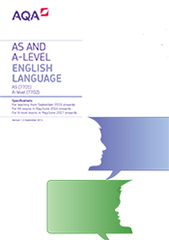3.2 Language varieties
The aim of this area of study is to allow students to explore language variety.
Students will study the key concepts of audience, purpose, genre and mode and will explore language in its wider social and geographical contexts. Students will study varieties of English within the British Isles. This part of the subject content also requires students to study social attitudes to, and debates about, language diversity.
Language diversity
Students should study a range of examples of language in use and research data to inform their study of diversity:
- texts using different sociolects (to include social and occupational groups, and gender)
- texts using different dialects (to include regional and national varieties of English within the British Isles)
- texts that use language to represent the different groups above
- written, spoken and electronic texts about a range of subjects, for various audiences and purposes in a variety of genres
- items from collections of language data (eg dictionaries, online resources, language corpora)
- research findings (eg tables, graphs, statistics).
When analysing texts and data, students should explore:
- how language varies because of personal, social and geographical contexts
- why language varies, developing critical knowledge and understanding of different views and explanations
- how identity is constructed
- how language is used to enact relationships
- attitudes to language diversity.
Methods of language analysis
Students will be required to use methods of language analysis to:
- identify and describe features of language diversity
- research diversity.
The following list is a guide to the areas of language students are expected to examine:
- phonetics, phonology and prosodics: how speech sounds and effects are articulated and analysed
- graphology: the visual aspects of textual design and appearance
- lexis and semantics: the vocabulary of English, including social and historical variation
- grammar, including morphology: the structural patterns and shapes of English at sentence, clause, phrase and word level
- pragmatics: the contextual aspects of language use
- discourse: extended stretches of communication occurring in different genres, modes and contexts.
Writing skills
Students will develop skills in:
- writing discursively about language issues in an academic essay
- writing about language issues in a variety of forms to communicate their ideas to a non-specialist audience.
